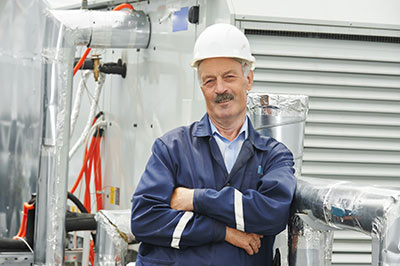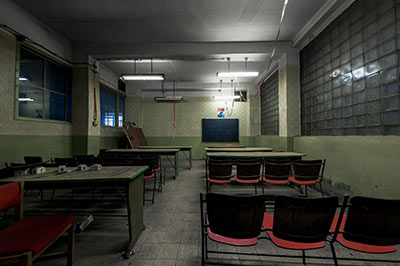Other helpful links from the EPA on integrating savings and health.
Tag: Healthy Schools
Are Schools Making Kids Sick?
(Posted on October 15, 2014). As a third-grader in Winsted, Connecticut, last year, Matthew Asselin was sick -- a lot. He was lethargic and plagued with a persistent wet cough, respiratory infections and painful headaches.
As the school year wound down, Matthew's health worsened. He was out for two weeks in the spring with pneumonia and then developed a sinus infection so severe he needed to spend the night at the hospital, where he received intravenous antibiotics and breathing treatments.
Community Schools as an Essential Facilities Strategy
By Helen Janc Malone & Reuben Jacobson, September 8, 2014.
School buildings communicate important messages to our children, their families, the community, and the educators and personnel that work there. A school’s physical appearance speaks to people about the value our society places on education and on the role of the school in the community. Too often, our urban school facilities send the wrong messages.
However, in communities with scarce resources, school facilities can play a particularly vital role. We call them community schools. They:
- create a safe and supportive school culture and a climate for learning in the school and community;
- develop engaging learning experiences inside and outside the classroom that enable students to prepare for college, career, and life;
- ensure that young people have the opportunities and supports that every family seeks for their children—mentoring, after school and summer activities, arts and cultural events, health and mental health services, nutritious meals, and more;
- engage families and communities in problem-solving of pressing community issues; and
- build social capital—the networks and relationships so critical to helping young people develop the ‘agency’ they need to face life’s challenges and become productive workers and citizens.
Community schools bring the assets of the community into the school facility. Depending on the local context, community schools might house a library, a career center, doctors, dentists, social services, recreational spaces, or after school and weekend programs. In a community school, families, educators, and communities are equal decision-makers. When the design of school space is built on community input, and includes services and activities that young people, families, and communities need, the community school becomes a vibrant resource for all.
There is a long history of seeing school buildings as centers of communities. In the early 1900s John Dewey, the famous Progressive educator, wrote about schools as social centers. He envisioned schools as a gathering place for people to learn from one another and throughout their lives regardless of age. That ideal continues today and is manifested best when school buildings become community schools.
As Secretary Arne Duncan noted: "I'd like to see public schools open 12, 13, 14 hours a day, year-round, offering not just mentoring and tutoring programs but art, chess, family literacy nights, debate teams, and GED and ESL programs for parents. It doesn't have to be that expensive to keep schools open longer. In every school you have classrooms, computer labs, libraries, and gyms. Rent the school out for free from 3:00 to 9:00 PM to great non-profit partners like the YMCA's, the Boys and Girls Club, college-readiness programs, and other enrichment activities. It is a tremendous waste of resources that schools aren't doing more to serve as one-stop community centers."
Cincinnati Community Learning Centers
Many school districts and communities are using the school building to transform communities. Cincinnati’s community schools, called Community Learning Centers (CLCs), illustrate how school and community leaders leveraged new funding for school construction to engage the community and to promote fairness and opportunity.
In 1999, Cincinnati Public Schools Facility Master Plan invested $1 billion to rebuild its public schools and turn them into community hubs, with resources and opportunities for all. Central to the district’s effort was to engage each neighborhood in a conversation about what they wanted their schools to look like. The conversation led to schools co-located community partners that promote academic excellence and provide recreational, educational, social, health, civic, and cultural opportunities for students, their families, and the community. And in several cases schools became K-12 facilities in response to a community demand.
How did this happen? Each school community decided which opportunities and supports they wanted based on local needs and assets. For example, when a community identified access to health care as a critical need, the CLC was designed to house a health clinic. When another community needed high quality early childhood opportunities, planners incorporated space for an early childhood center.
What results do we see from Cincinnati’s facilities plan and community engagement? The school board has made all schools CLCs, Cincinnati students have demonstrated significant academic improvement, neighborhoods are being revitalized and more families are moving back to the city. And there are myriad of strong partnerships with community groups, business, and others that are all working inside school buildings to create places were all children and families succeed.
An emerging example of a substantial investment in school facilities come from Baltimore. The State of Maryland has recently passed a $1 billion facilities plan to revitalize Baltimore’s public school buildings. As Michael Sarbanes, former Baltimore City Schools’ Executive Director of Engagement, stated, “…this work is based on the belief that schools are an anchor in the community and the schools should be an asset for community life where they’re located.”
School Facility as a Community School
So what are school facilities like around the country and what vision can we create for better school facilities that encourage better learning? A recent report, the Condition of America’s Public School Facilities: 2012 –13, states that over half of our public schools require “repairs, renovations, and modernizations to put the school’s onsite buildings in good overall condition.” The report estimates that it will require $197 billion, or $4.5 million per school to revitalize our schools.
Policymakers responsible for funding repairs to existing buildings or for funding new facilities should keep two things in mind:
- Robust citizen participation in the planning process is essential to designing schools that are deeply rooted in community and responsive to its needs;
- The way we design schools is a key factor in mobilizing the entire community to support young people.
Using the school facility as a community school is the way to achieve our ideals of the school as a social center, a place that values learning at all ages, and that creates equitable opportunities for all.
Dr. Helen Janc Malone
Director of Institutional Advancement
National Director, Education Policy Fellowship Program
Reuben Jacobson
Senior Associate for Research and Strategy, Coalition for Community Schools
Why Portables?
span style="color: #222222;">Presented by EarthFix Media.
Portable, modular or relocatable classrooms -- whatever you call them -- are a necessity for schools. Students don't come in class-size packages of 25 to 30 and budgets are tight. But many portables become permanent fixtures, in place for decades at a time. Costly and insufficient, these aging structures burden the grid, frustrate teachers and administrators and compromise student health. EarthFix examines the extent of the problem, how it happened and what can be done about it. (Posted August 29, 2014)
The Importance of School Facilities
By Dr. Linda Lemasters
August 22, 2014.
Scholars have researched the question for nearly a century: Do facilities affect student outcomes and teacher instruction? To respond to that question, the next three Bricks and Mortar BLOGS will address (a) the importance of school facilities for our nation, (b) best practices in school facilities, and (c) the impact of school facilities on the learner. Knowledge of the three is intricately related.
We all know where the schools in our community are; most of us give little thought as we drive by them every day as to the size of their acreage, the amount of square feet under roof, the incredible amount of money to make the fields and buildings available to students, as well as community activities. Are there any other governmental functions, other than schools, that require such a huge expanse of real estate?
A few years ago the 21st Century School Fund shared a fact sheet with general composite information about school facility infrastructure (2011). Although I have worked with school facilities for over two decades, I had no idea of the magnitude of our national school resources. The facts are: there are nearly 100,000 preK-12 public schools, which over 55 million school-age children attend, and over 6.6 billion gross square footage of building space and 1 million acres of site area. The public investment is well worth discussion by educators. If we add this information to a more recent survey from the United States Department of Education via the National Center for Education Statistics (2014) on facilities, the facts are more startling. Of the 1800 schools surveyed, billions of dollars are needed for renovations and repairs, averaging $4.5 million per school. Even with only a small portion of our total 100,000 public schools having the same needs, there is a crisis in the public schools our children attend.
Another area we often overlook is the funding needed for operating our school buildings. Utilities alone cost localities nearly $9.5 billion dollars a year—fluctuating with the weather. Knowing that these costs fall totally to the localities, along with the majority of other upkeep expenses in most states, should make us attentive to the scope of the influence of facilities on our localities and states. In addition, personnel for schools take 60-80% of local budgets.
What are the implications for our students and teachers—and for communities? Most frequently, the needed maintenance, retrofits and renovations entail HVAC, replacing ineffective windows and doors, upgrading classroom lighting, and replacing leaking roofs. We all need fresh air, especially children, yet many of the old HVAC systems do not provide the proper ventilation; some do not maintain a thermal environment to enable students to focus on their work; and/or, the health related problems with respiratory illnesses keep children and teachers home from school. Poor classroom lighting has its on own effects on children’s eyes, health, and mood. Leaky roofs can exacerbate mold, mildew, and destroy computers, furniture, and flooring. Even with such an incomplete list, we can exhibit and the research supports how needed maintenance affects safety, health, capital resource damage, and budgets. Nearly all of these retrofits and renovations can save energy and thus money—money that can be used for instruction.
Part of the mission of the Education Facilities Clearinghouse is to call to the attention of educators and policy makers the magnitude of importance of school facilities on our localities and states. Our school buildings and grounds and their impact on all of us are multi-dimensional and more important than most people realize.
References:
Condition of America’s Public School Facilities: 2012-13. U.S. Department of Education, NCES, Report 2014-022 (March 2014).
PK-12 Public School Facility Infrastructure Fact Sheet. 21st Century School Fund (February, 2011).
Linda Lemasters, Director, Education Facilities Clearinghouse Linda is an associate professor in the Graduate School of Education and Human Development of The George Washington University, where she teaches graduate level coursework, advises students, and directs student research. Her areas of expertise and research include educational planning, facilities management, and women CEOs. She actively conducts research concerning the effects of the facility on the student and teacher, publishes within her field, and has written or edited numerous books including School Maintenance & Renovation: Administrator Policies, Practices, and Economics and book chapters including a recent chapter, Places Where Children Play, published July, 2014 in Marketing the Green School: Form, Function, and the Future.
Printable Version of The Importance of School Facilities
Creating Healthy Indoor Environments in Schools
EPA Website, (2014). Promote a healthy learning environment at your school to reduce absenteeism, improve test scores and enhance student and staff productivity. This website provides a variety of guides to help schools maintain an appropriate Indoor Air Quality (IAQ). The list below is not exhaustive. (Posted on August 4, 2014).
Guides
IAQ Tools for Schools Action Kit
The Indoor Air Quality Tools for Schools Approach: Providing a Framework for Success
Envisioning Excellence: IAQ Strategies in Action
Building Air Quality: A Guide for Building Owners and Facility Managers
EPA Information about Asbestos in School Building
Public and non-profit private schools have distinct regulatory requirements to protect school children and school employees from asbestos exposure. This page provides information on these requirements as well as resource materials for schools and parents. (Posted July 31, 2014).
Defining “Clean” in School Facilities & Its Impact on Students
ACEF Webinar, presented By: Dr. Richard Shaughnessy
There are strong relationships between a school classroom’s healthy indoor environment (IEQ) and its student wellness and productivity. This webinar will describe why improvements to classroom indoor environmental quality are needed to create and maintain healthy schools. (Posted July 10, 2014).
Smart design + school = healthy kids
Video about designing healthier schools and therefore helping students to be healthier.
(Posted on June 27, 2014).
Towards Healthy Schools 2015 – Progress on America’s Environmental Health Crisis for Children
Coalition for Healthier Schools (2015).
Towards Healthy Schools 2015: Progress on America’s Environmental Health Crisis for Children is the third triennial state-by-state data and policy report on this topic since 2006. Sick Schools (2009) and before it Lessons Learned (2006) researched and assessed state-by-state data and policies on environmental conditions at schools and risks to children’s health, compiling them into a single, unique resource that painted a deeply disturbing picture, in which vulnerable children endure unhealthy schools. This guide provides basic federal data for public schools, such as total number of buildings; total enrollment; total number of personnel; percentage of children with asthma; percentage of children without health insurance; total number of children receiving special education; total number of children of minority status; and more.









